WOOLNER, Thomas
Thomas Woolner was born at Hadleigh, Suffolk on 17 December 1825, son of Thomas Woolner (1805-24 December 1868) and his first wife, Rebecca née Leeks and after her death, Thomas, sen. and his three children moved to Witnesham, Suffolk to live with his Leek in-laws. Thomas, senior's second wife Sarah, died at Otley, Suffolk on 20 September 1891, aged 84. After schooling at Ashbocking, Suffolk, about 1830 his father joined the Post Office and they moved to London where young Thomas studied under a Mr Lyne. At the age of twelve, indentured to artist Charles Behnes (died 1840), and on Charles Behnes death, Thomas joined Behnes's brother William (c1795-1863), a talented portrait sculptor, who trained him, particularly in carving, and when his apprenticeship finished, Behnes found work for him. On 16 December 1842, Thomas entered the Royal Academy Schools and first exhibited at the academy the following year, but his life-size plaster group ‘Death of Boadicea’ was unsuccessful in the 1844 Westminster Hall competition for commissions for the new Palace of Westminster. His earliest important surviving work is the statuette of Puck (plaster, 1845–7) which was admired by William Holman Hunt (1827-1910). An event that set the course of Woolner's career occurred in 1847 when he met his new studio neighbour, Dante Gabriel Rossetti (1828-1882) when the two of them, along with John Everett Millais (1829-1896) and William Holman Hunt (1827-1910), joined the Cyclographic Society, a sketching club. This foursome, together with three other young artists, formed the Pre-Raphaelite brotherhood in 1848, a major force in British art in the 1850s and early 1860s. Woolner's poem ‘Our Beautiful Lady’ is the opening piece in the first issue of their short-lived journal 'The Germ', published in 1850. In 1851, Woolner was living at Mary (now Stanhope) Street with his father and stepmother Sarah and eight children. His defeat by Frederick Thrupp (1812-1893) in the competition for the national monument to Wordsworth for Westminster Abbey, together with his modest critical and financial success, persuaded Woolner in 1852 to try gold prospecting in Australia together with Bernard Smith (1820–1885), a sculptor, and Edward Latrobe Bateman (1816-1897), nephew of the governor of Victoria. Reckoning that his £50 of gold had cost him £80, Woolner abandoned prospecting in 1853 and returned to Melbourne to sculpt. He modelled numerous portrait medallions at £25 each, including one of William Charles Wentworth (1790-1872), the campaigner for self-government for New South Wales. Although busy, the lack of an established record of public sculpture prevented him from obtaining the major commissions necessary to fulfil his ambitions, so he returned to England in 1854. Woolner persuaded Alfred Tennyson (1809-1892) to sit for a new portrait medallion and a marble bust, finished in 1857, which proved to be the turning point of Woolner's career, establishing him as an outstanding bust-maker of men but he rarely tackled women. Oxford University gave Woolner his first public commission, a limestone figure of Francis Bacon (1761-1828), which cost £70 in 1857, for a series of great scientists for the Gothic revival University Museum. In the same year Hunt introduced Woolner to his patron, Thomas Fairbairn (1823-1891) of Manchester, who ordered a poignant group of his deaf and dumb children, Constance and Arthur. With growing critical and financial success, in 1861 Woolner purchased for £1,200, 29 Welbeck Street, London, which he initially shared with the critic Francis Turner Palgrave (1824-1897) of Great Yarmouth, and where he lived until his death. On 6 September 1864 he married Alice Gertrude Waugh, with whom he had six children including Dorothy and Phyllis who both had pictures accepted by the Royal Academy. His patrons tended to come from learned institutions or to be serious-minded, with artistic pretensions and social consciences but he himself taught at the London Working Men's College. His published work includes 'My Beautiful Lady' (1863), 'Pygmalion' (1881), and 'Silenus' (1884). Elected an associate of the Royal Academy on 26 January 1871 and a Royal Academician on 29 January 1874 and appointed professor of Sculpture at the academy in 1877, but he resigned five years later. Thomas Woolner died at his home in Welbeck Street on 7 October 1892 and buried at St Mary's, Hendon. His wife Alice died at Welbeck Street on 9 March 1912, aged 67.
Royal Academy Exhibits
from 15 Mary Street, Regent's Park
1843 1442 Model of Eleanor sucking the venom out of the wound &c. - sculpture
1847, 1848, 1852, 1856, 1857, 1858, 1859, 1860, 1861, 1862, 1863, 1864, 1866, 1867, 1868, 1869, 1870, 1871, 1872, 1873, 1874, 1876, 1877, 1878, 1879, 1880, 1882, 1883, 1884, 1885, 1888, 1889, 1890, 1891, 1893
Works by This Artist
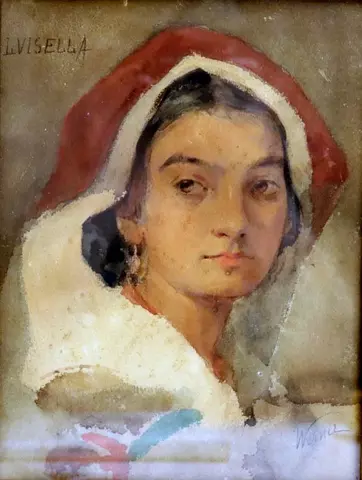
|
Girl in a BonnetWatercolour
|
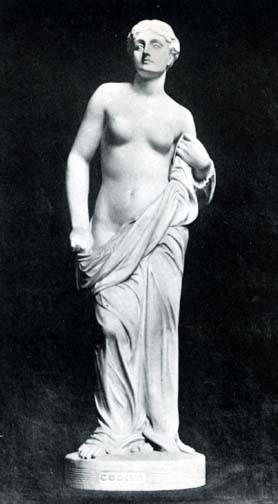
|
GodivaMarble |
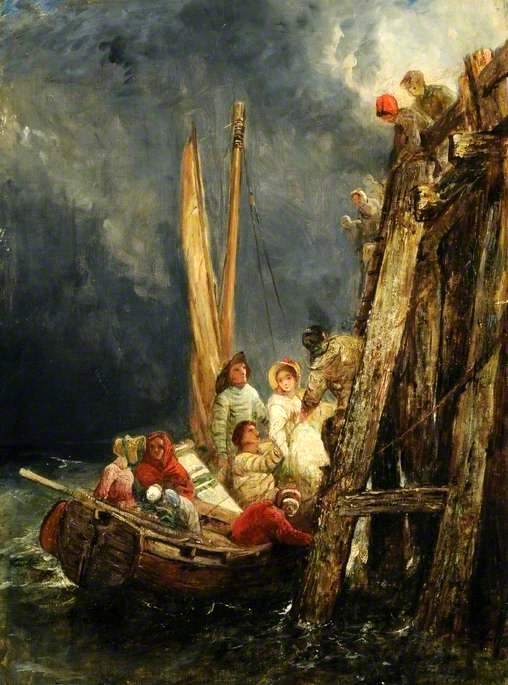
|
The FarewellOil on canvas
|
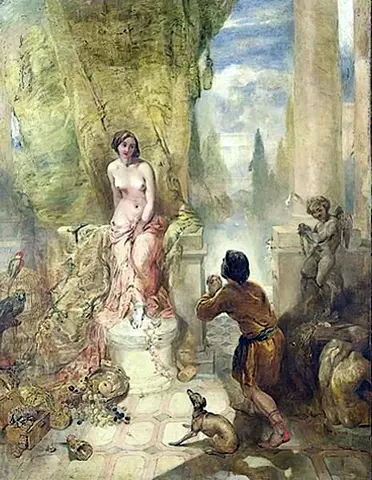
|
Triumph of LoveOil on canvas |
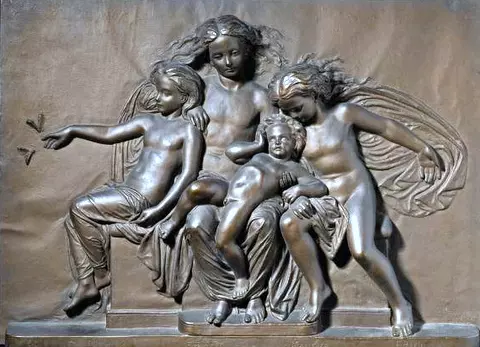
|
In MemoriamGalvanised plaster sculpture
|